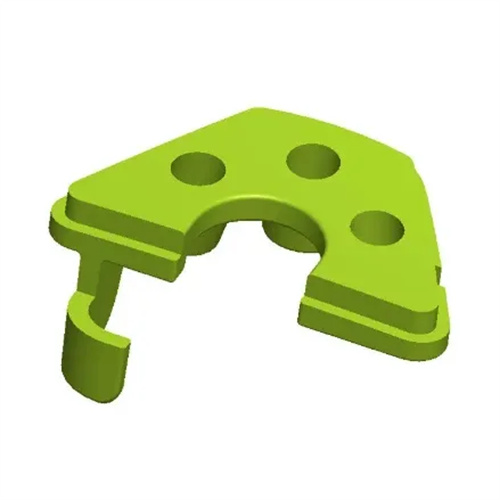Common undercut structure and inclined top side core pulling of plastic parts
In the design and production of plastic parts, undercut structures are common design elements that enable plastic parts to achieve specific functions or assembly requirements, but they also pose considerable challenges to mold design and molding. Common undercut structures include inner undercuts, outer undercuts, and local raised undercuts. Inner undercuts often appear inside box-type and cylinder-type plastic parts, such as bottle caps with internal threads, whose threads are typical inner undercuts; outer undercuts often exist on the outer surface of plastic parts, like the snap-on protrusions on some electrical appliance casings; local raised undercuts may be distributed anywhere on the plastic part for precise coordination with other parts. If these undercut structures are not designed properly, it will make it difficult to demold the plastic part, and may even cause problems such as deformation and cracking. Therefore, mold structures such as beveled tops and side core pulling are needed to solve them.

The lifter is a commonly used mold component for dealing with undercuts in plastic parts. Its working principle is to demold the undercuts through oblique movement. The lifter is usually driven by an ejector plate. During the ejection process, it not only moves vertically but also shifts horizontally, thus avoiding the obstruction of the undercut on the plastic part. For example, for a plastic part with a small undercut on the inside, the lifter will tilt inward during ejection. When the plastic part is pushed to a certain height, the interference between the undercut and the mold is eliminated, and the plastic part can be smoothly removed. The design of the lifter requires precise calculation of the tilt angle and stroke. Too large an angle may result in insufficient lifter strength and easy damage; too small an angle may not completely disengage from the undercut, affecting the demolding effect. At the same time, the clearance between the lifter and other parts of the mold must also be strictly controlled to avoid glue leakage or movement jamming.

The side core pulling structure is mainly used to handle complex undercuts on the outside or inside of plastic parts. It achieves demolding of the undercuts by side pulling. The side core pulling is generally driven by an oil cylinder, an air cylinder or a gear rack mechanism. According to the position and shape of the undercut, it can be divided into inner core pulling and outer core pulling. The outer core pulling is often used to handle undercuts on the outer surface of plastic parts, such as the buckle on the outer casing of an electrical appliance; the inner core pulling is suitable for undercuts inside the plastic part, such as the protrusion inside a cylindrical plastic part. The pulling distance of the side core pulling must be greater than the depth of the undercut to ensure that the undercut is completely removed from the mold. In addition, the movement of the side core pulling needs to be coordinated with the ejection mechanism to avoid interference during the movement, which affects the molding quality and production efficiency of the plastic part.

In practice, the choice between a slanted top and side core pulling requires comprehensive consideration based on factors such as the part’s undercut characteristics, structural complexity, and production batch size. For parts with simple structures and shallow undercuts, a slanted top structure may be more economical and practical, as its mold structure is relatively simple and manufacturing costs are lower. For parts with larger undercuts and complex structures, a side core pulling structure may be more suitable, as it allows for more reliable demolding of the undercuts, ensuring the part’s dimensional accuracy and surface quality. When a part has multiple undercuts in different directions, both a slanted top and side core pulling structures may be necessary. This requires the mold designer to possess extensive experience and to design a reasonable layout and coordinated motion.

With the continuous development of the plastics industry, the structures of plastic parts are becoming increasingly complex, and the requirements for undercut processing are becoming increasingly stringent. Slanted ejector and side core pulling technologies are also undergoing continuous innovation and improvement. For example, the use of servo motor-driven side core pulling mechanisms enables more precise motion control, improving production efficiency and part quality. The use of new materials, such as high-strength alloy steels, enhances the wear resistance and service life of these systems, reducing mold maintenance costs. In the future of plastic part production, these technologies will continue to play a vital role, providing more reliable and efficient solutions for the molding of complex plastic parts.
